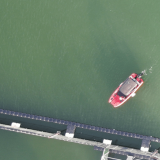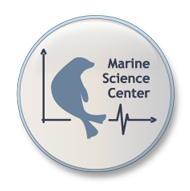Research

In the research program, the research team wants to focus on underwater optic flow perception in pinnipeds. Optic flow has recently been described as a source of information available to harbor seals (Gläser et al. 2014). These animals can probably use optic flow for underwater locomotion, orientation, and navigation, even and especially in turbid waters.

In psychophysical experiments, we would like to assess now on the basis of this discovery, if pinnipeds are able to cope with specifics of the underwater optic flow situation such as violations of environmental rigidity.

For the underwater optic flow studies, we installed an 84" monitor in an elaborate underwater housing in our facility.

Furthermore, we are interested, if pinnipeds can estimate specific parameters from optic flow such as angles turned, and distances travelled, crucial for path integration. Thus, we are planning to extend research into the direction of (visual) orientation and navigation conducting experiments in virtual environments and open-field experiments thereby trying to unravel which mechanisms pinnipeds use to orient and navigate in the open ocean.
The results of these experiments will then help to model the behavior of wild animals at sea, thereby linking lab experiments with wildlife research

In addition, the brain areas involved during optic flow perception shall be revealed using functional magnetic resonance imaging in combination with classic brain neuroanatomy.

Besides the classic sensory organs such as vision, we are interested in characterizing the sense of time in harbor seals which could be relevant in the context of foraging decisions or orientation.

Focusing on a single modality will not allow us to understand complex behavior in total as complex behavior is expected to be based on multisensory input. Thus, a new set of experiments shall examine the basic principles of multisensory integration in harbor seals.


